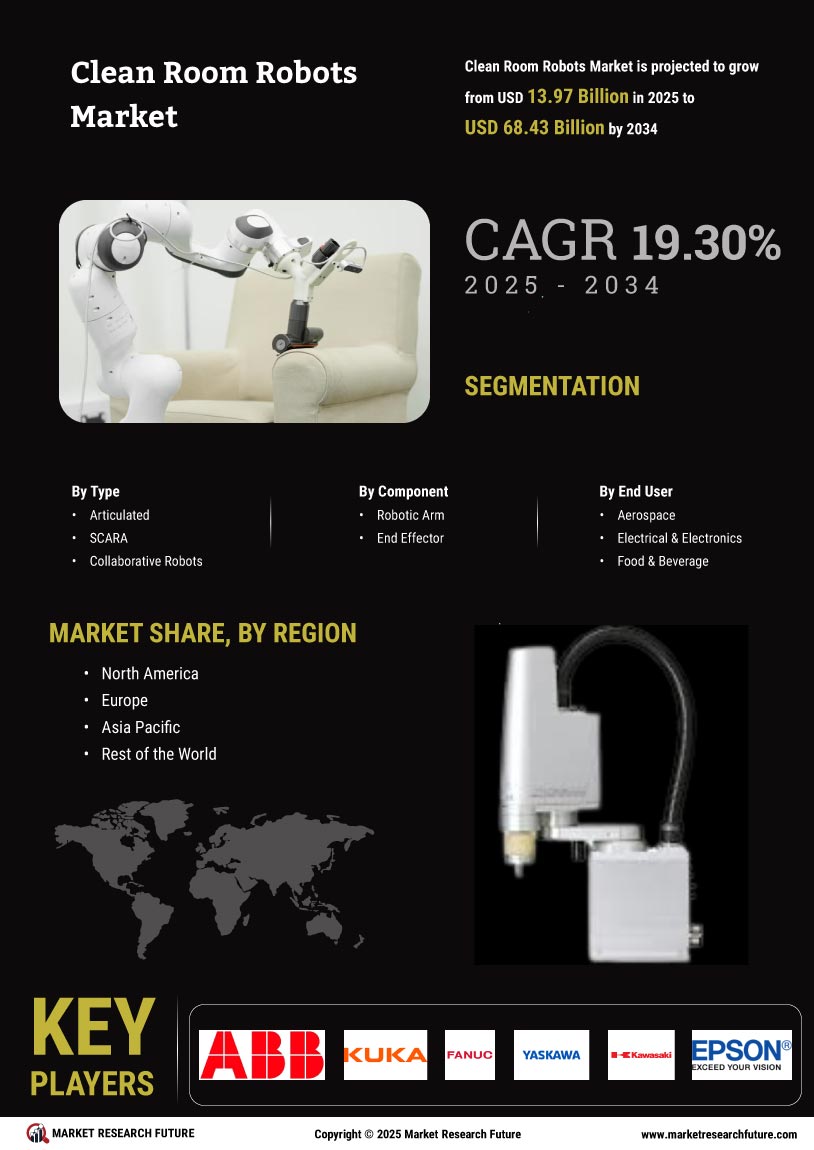Leading players in the clean room robots market are focused on innovation and strategic partnerships to maintain their competitive edge. They invest in research and market developments to develop advanced robotic solutions tailored for clean room environments, offering increased precision and reliability. Additionally, these companies collaborate with industry partners to integrate complementary technologies and expand their product portfolios. Furthermore, they emphasize customer-centric approaches to provide tailored solutions and maintain strong relationships with clients, ensuring sustained market leadership.
Manufacturing locally to minimize operational costs is one of the key business tactics used by manufacturers in the global Clean Room Robots industry to benefit clients and increase the market sector. In recent years, the Clean Room Robots industry has offered some of the most significant advantages to articulated. Major players in the Clean Room Robots Market, including ABB Ltd., KUKA AG, FANUC Corporation, Yaskawa Electric Corporation, Kawasaki Heavy Industries Ltd., Mitsubishi Electric Corporation, Epson Robots, Denso Corporation, Stäubli International AG, Universal Robots and others, are attempting to increase market demand by investing in research and development operations.
ABB Ltd. is a global leader in robotics and automation solutions, with a strong presence in the clean room robots market. The company offers a comprehensive range of clean room robotic systems tailored for various industries, including pharmaceuticals, electronics, and automotive. ABB's clean room robots are renowned for their precision, reliability, and efficiency, making them ideal for tasks such as assembly, packaging, and testing in controlled environments. Leveraging advanced technologies such as AI and IoT, ABB continuously innovates to meet the evolving needs of customers for clean room automation.
With a focus on quality, safety, and customer satisfaction, ABB remains at the forefront of the clean room robots market, providing cutting-edge solutions to enhance productivity and competitiveness for its clients.
KUKA AG is a leading global provider of robotics and automation solutions, offering a wide range of clean room robots tailored for diverse industries. With a strong presence in the clean room robots market, KUKA's robotic systems are renowned for their precision, flexibility, and reliability in controlled environments. These robots are utilized in applications such as semiconductor manufacturing, pharmaceutical production, and electronics assembly, where cleanliness and contamination control are critical. Leveraging advanced technologies and a customer-centric approach, KUKA continues to innovate and develop cutting-edge clean room automation solutions to meet the evolving demands of its clients.
With a commitment to quality, efficiency, and sustainability, KUKA remains a trusted partner for businesses seeking to enhance their operations in clean room environments.


















Leave a Comment